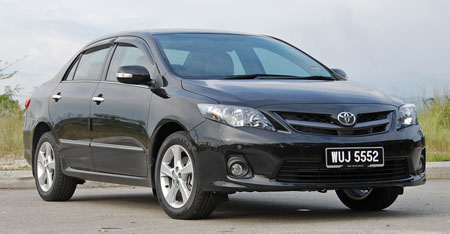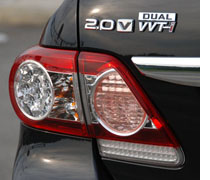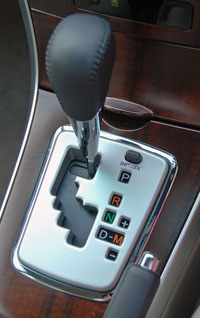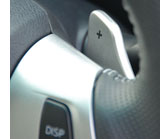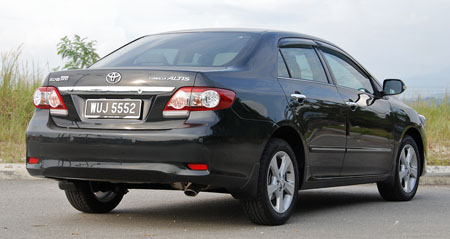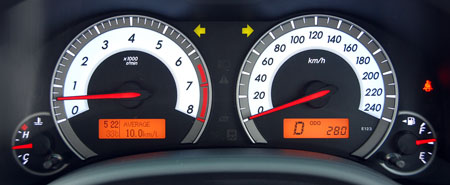Profile
ALVIN TOYOTA R,H MIRI
Toyota Pruis 2010
THE TOYOTA PRIUS, THE HYBRID SYNERGY DRIVE OPTIMISES TWO SOURCES
OF POWER (ELECTRIC MOTOR AND ENGINE) FOR A PETROL PRODUCTIVE DRIVE.
WITH SUPERIOR PERFORMANCE AND EFFICIENCY, IT'S NO WONDER WHY OVER
2 MILLION PEOPLE* WORLDWIDE HAVE CHOSEN THE PRIUS.
Toyota Altis
The facelifted Toyota Corolla Altis will be officially launched tomorrow (23 September) and if you missed our previous posts, here’s the lowdown. A new ZR range of Dual VVT-i engines are now in place, and there’s a 2.0-litre range topper to join the 1.8 and 1.6. The new engines will be paired to another first for the Altis
– a CVT gearbox with seven virtual ratios in manual mode (except the 1.6, which soldiers on with a 4-speed auto).
We’ve driven it already, when Toyota Asia Pacific organised a regional media drive for the new car at the Sepang circuit. And while we had a decent first impression, there’s only so much you can experience in a few runs, on a circuit. So here’s a more detailed review of the new Altis, in the exact same spec that will be launched in Malaysia.
Continue reading the report after the jump.
As noticed in our first drive in Sepang, this Super CVT-i gearbox is more alike a conventional automatic than any CVT this writer has ever used. I’m betting that many showroom test drivers won’t even know that it’s a stepless gearbox unless told. Ease on the gas as you pull away and you’ll notice a connection between tacho and speedo needles. Give it full throttle and the revs fall a bit after reaching 5,000 rpm or so before climbing again – like an automatic, albeit a sloppy one as the “changes”
aren’t that clean.
That quirk was deliberately engineered into Super CVT-i for it to feel “normal” to most users, but if you’re jumping into this Altis from the old one, what’s not normal is the new car’s seemingly resistance free drivetrain; the low NVH levels was something I really grew to appreciate over our few days with the car. It glides off as quietly as you’d like, and the engine ticks at just 2,000 rpm at a 110 km/h cruise. The Nissan Sylphy shares many of these smooth and silent qualities, but that car lacks the Altis’ successful auto ‘box mimicking and manual mode; the latter comes in handy when you want more involvement. The steering paddles are larger and have more substantial action than those in the Honda Civic, and the shifts are quick.
The drivetrain is very good, but the Altis’ ride and handling package isn’t quite up to mark, although this shouldn’t be a big issue to its target market. They prefer a a comfort oriented setup, which is good, but while the Corolla is softly sprung, secondary ride comfort over rough roads and bumps could be better. The suspension seems to deflect rather than absorb imperfections, and while it’s never harsh or loud as the rough edges are well taken off, I still felt too much of the road to be truly comfortable. Same goes for rumble strips and highway expansion joints – the Altis hops over them.
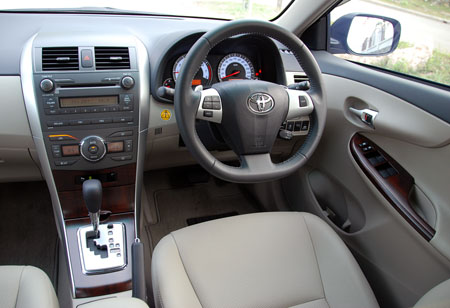
Besides creating a greater impression of space and airiness, the Altis interior feels luxurious the moment you step in. Although it isn’t greatly changed from the old model, the little differences make a positive difference. The grey soft plastics that line the top half of the dash and door mouldings are in a darker shade than before, and the faux wood trim is now in tasteful dark wood with a matte finish. For me, while the old orangey and shiny wood was a turn off, the new trim successfully warms the ambience over lesser models that have silver plastic.
For the Optitron dials, they now sport a white ring with black numbers – looks sportier and is more legible than before. All models get a green ECO light that well, lights up when you’re light on the throttle. You can also call up an ECO meter from the trip computer if the former isn’t enough.
Other things I noted over the few days with the car are the abundance of little storage spaces (both sides of the centre console base, left one has a hook), the illuminated vanity mirrors (not that I used them much  ) and the handy sliding arm rest. I also realised that the controls for the wing mirrors are completely unsighted, blocked by the steering wheel. The seat base (driver gets electric adjustment with lumbar control) could have been longer too, although the leather covers weren’t as slippery as in the Sepang cars. The front parking sensors were quite useful too.
) and the handy sliding arm rest. I also realised that the controls for the wing mirrors are completely unsighted, blocked by the steering wheel. The seat base (driver gets electric adjustment with lumbar control) could have been longer too, although the leather covers weren’t as slippery as in the Sepang cars. The front parking sensors were quite useful too.
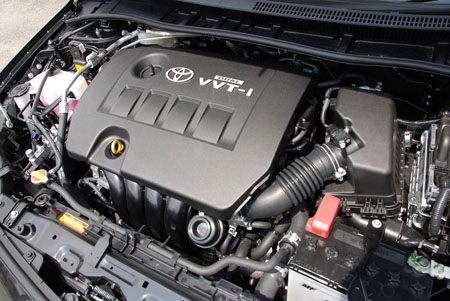
Drive wise, the Altis is a smooth operator with this new drivetrain. The engine is rarely heard in normal everyday driving, which isn’t just because it’s very well insulated, but because it rarely needs to be worked very hard. As usual for a Toyota, there’s good throttle response and lots of usable grunt despite the unspectacular headline figures (147 PS/187 Nm). Getting up to highway speeds from rest and overtaking is really effortless in conjunction with the CVT, which works very quietly.




